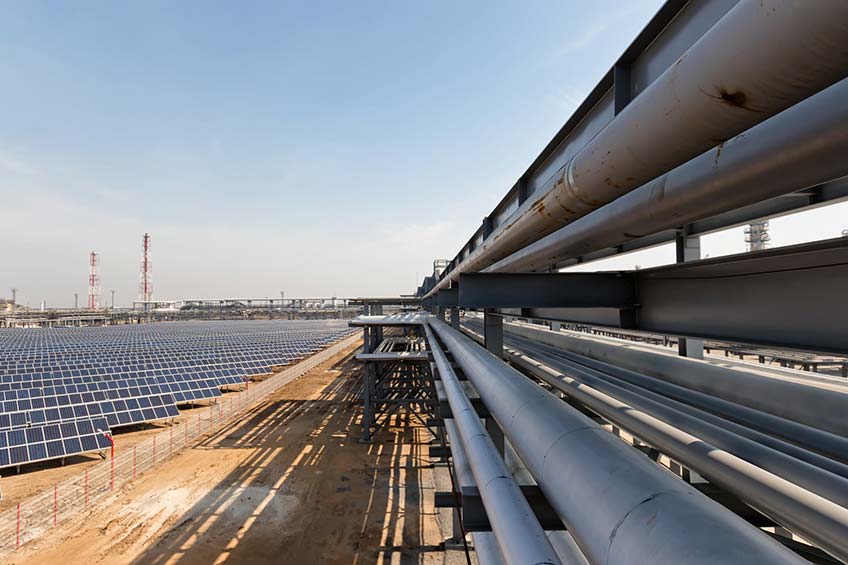The Grid-Pipeline Two Step: Managing the Electricity-Gas Interface
September 3, 2019— The 2014 polar vortex was the canary in the coal mine. Historically low temperatures across several regions of the United States spurred a spike in natural gas and electricity demand. A shortage of natural gas supply to meet both heating and electricity needs led to power plants curtailments, and the electrical system came close to having insufficient supply to meet demand.

Since this near miss, steps have been taken to shore up the gas and electricity market coordination to ensure winter-time reliability, however as these two sectors grow increasingly intertwined, additional coordination will be key to ensuring both efficiency and reliability of operations. Continued growth in variable renewable energy will magnify the need for greater coordination between natural gas and power markets.
Low-Cost, Dispatchable Power in the Mix
In the United States, natural gas plants produce more electricity than any other fuel source. In fact, according to the Energy Information Administration (EIA), in 2018, more than 35% of total electricity generation was attributed to natural gas. This is a win on several fronts, as natural gas provides low-cost, dispatchable power that is less emissions-intensive than other fossil fuels. For this to be a win across the board, however, improved coordination with the electricity markets will be an imperative, especially as variable wind and solar output continues to grow.
In their report, Managing the Electricity-Gas Interface: Current Environment and Emerging Solutions, NREL/JISEA researchers Sean Ericson and Jeffrey Logan, and Daniel Kaffine of CU Boulder took a look at how the natural gas and electricity markets interact and made the case for improved integration.
In Tandem Trajectory
The electricity and natural gas markets followed a parallel path in their development. For much of the 20th century, they were both structured as vertically integrated monopolies, and both faced restructuring in the 1980s. This restructuring – combined with the commercialization of efficient combined cycle gas turbines – led to an unprecedented growth in natural-gas fired generators.
Though capacity increased, the high natural gas prices of the 2000s kept natural gas deployment low. That is, until hydraulic fracturing entered the scene, causing natural gas prices to tumble. The share of natural gas used in power plants grew from 20% in 1997 to almost 40% in 2017.
Post-restructuring, the production, transportation, and distribution of natural gas became distinctly separate. Gas prices are determined by the market forces; transmission and distribution prices are regulated. Transmission rates are determined by firm or interruptible contracts. When demand exceeds pipeline capacity, interruptible contracts are the first to curtailed.
The electricity market structure is a more complicated, however. Though restructuring efforts have been underway for many years now, approximately 40% of customers are still served by the vertically integrated monopoly structure. The security-constrained economic dispatch process determines the generator dispatch and the price of electricity in restructured markets, calculating the lowest-cost path to meeting load and system reliability constraints.
The regulations and market structures for both the natural gas and electricity industries are continually evolving to account for the growing integration between them.
Coordination is key
Currently, the drivers in the electricity and natural gas markets are mismatched – however coordination between the two is essential for ensuring reliability and efficiency.
In the short run, improving communications between natural gas and electricity operators can ensure reliable daily operations. In the long run, capacity expansion can be supported by the development of regulations and prices that allow for joint optimization of investments.
Specifically, the researchers suggested:
- Changes in market regulations to encourage the construction of gas pipelines and gas storage;
- Changes in market rules, such as pay for performance rules, to incentivize generators to secure firm contracts and expand pipeline capacity; and
- Seeking out alternative means of ensuring reliability, such as dual fuel use, increased gas storage, or improved demand response.
Beyond reliability concerns, the growing interdependence between the two markets also increases exposure to threats such as cyberattacks. Coordination between the two sectors is key to effectively thwarting these intentional disruption attempts.
Building an Integrated Toolbox
While many tools exist to model electricity markets and natural gas markets in isolation, few can perform an integrated analysis of the two systems, and even fewer can conduct such analyses at the scale required for grid operators.
Efforts are underway to develop an integrated framework that accounts for both grid constraints and dynamic natural gas operations. Research is paving the way for tools and models that co-simulate natural gas and power system networks as well.
Improved coordination and integration between the electricity and natural gas markets can ensure supply stability and reliability, ensuring that now and in the future, customers won’t be left out in the cold.
JISEA analysts and industry partners are continuing to study this issue, developing new models for coordination between the electricity grid and pipeline networks. Be sure to keep an eye on our website and social media channels for new reports on this important topic.
Back to JISEA News >
